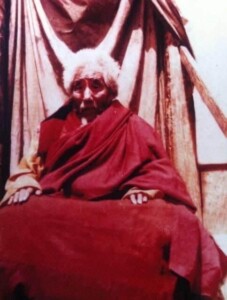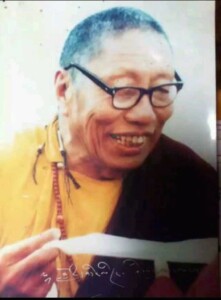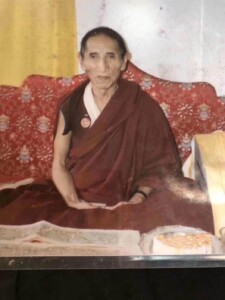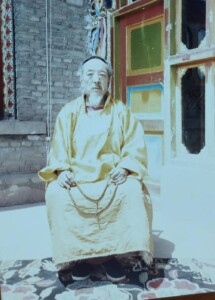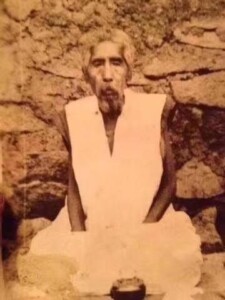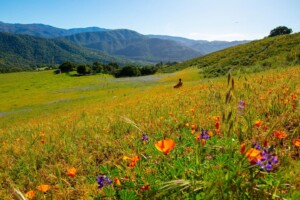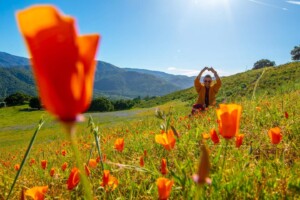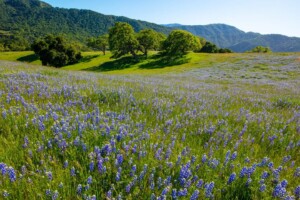

Mahamudra Teaching, Sat.&Sun, July 8-9
July 8, 2023 @ 10:00 am - July 9, 2023 @ 4:00 pm
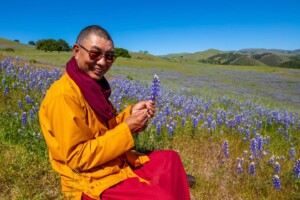 Mahamudra Teaching
Mahamudra Teaching
by Venerable Khenpo Karten Rinpoche
Saturday and Sunday, July 8 and 9, 2023
10:00am to 12:00pm & 2:00pm to 4:00pm (Pacific Time) each day
Four sessions in total, held in-person and on Zoom
In-person attendees limited to 22 people
Open to all who have taken refuge or who have the basic foundations of Buddhist teachings
Registration required, donations requested, but no one turned away for lack of funds
Suggested donation: $40.00 per day or $60.00 for all four sessions
REGISTER HERE
If you participated but did not register–we appreciate your donation!
What is Mahamudra?
The Tibetan nonsectarian, Jamgon Kongtrul, characterizes mahāmudrā as the path to realizing the “mind as it is” (Tibetan: sems nyid) which also stands at the core of all Kagyu paths. He states, “In general, Mahamudra and everything below it are the ‘mind path’ ” (Tibetan: sems lam). Mahāmudrā traditionally refers to the quintessence of mind itself and the practice of meditation in relation to a true understanding of it. (Source, Wikipedia)
Here is a 2013 teaching by Khenpo Karten Rinpoche here: Mahamudra’s Four Stages of Yoga – Manjushri Dharma Center
Texts
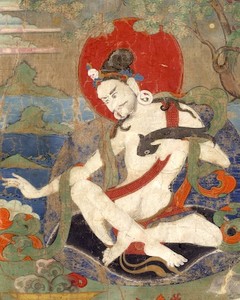 The Ganges Mahāmudrā Instructions by Tilopa
The Ganges Mahāmudrā Instructions by Tilopa
༄༅། །ཕྱག་རྒྱ་ཆེན་པོའི་མན་ངག
Tilopa (T. ti lo pa ཏི་ལོ་པ་) (988–1069) was an Indian tantric practitioner who is counted among the eighty-four mahasiddhas. In Tibet, and he is known as the originator of the Kagyu lineage and the teacher of Naropa. Source: Encyclopedia of Buddhism (Tilopa – Encyclopedia of Buddhism)
Image courtesy of the Himalayan Art Resources
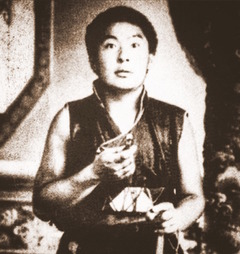 A Way of Settling into the Realization of Mind’s Essence by Khenpo Gangshar Wangpo
A Way of Settling into the Realization of Mind’s Essence by Khenpo Gangshar Wangpo
༄༅། །སེམས་ངོ་འཇོག་ཐབས་བཞུགས་སོ། །
Khenpo Gangshar Wangpo (b. 1925-?) was a highly respected lama in Eastern Tibet and one of the primary teachers of Chögyam Trungpa Rinpoche (the 11th Trungpa tulku) and the 9th Thrangu Rinpoche. Khenpo Gangshar was trained in Shechen Monastery, a monastic center established in the end of the seventeenth century and part of the Mindröling lineage within the Nyingma tradition of Tibetan Buddhism. He was the teacher of Kyabje Sangye Tenzin Rinpoche, and Sangye Tenzin was the kind Root Guru of our own Khenpo Karten Rinpoche. Source: Wikipedia (Gangshar Wangpo – Wikipedia)
Image courtesy of the Himalayan Art Resources
Additional texts/supporting prayers
- Preliminary Prayers (in English) Rinpoche will recite these in Tibetan
- Mandala Offering and Request for Teachings (in Tibetan and English) To be recited by the students before the teaching
- Khenpo Karten Long Life Prayers (in Tibetan, updated version) To be recited by the students after the last session
- Khenpo Karten Long Life Prayers (in English, updated version) To be recited by the students after the last session
- Closing Prayers (in Tibetan and English) Rinpoche will recite these in Tibetan at the end of each session
- Butterlamp Prayer (In Tibetan and English) To be recited by all at the conclusion of all sessions; it is auspicious for all to have a lit candle in hand while you recite this prayer.
- Rinpoche quoted from additional texts, “Striking the Vital Point in Three Statements,” by Mipham Rinpoche and Garab Dorje and “Special Teaching of the Wise and Glorious King,” by Patrul Rinpoche, here is the link to those texts in both Tibetan and English: https://www.lotsawahouse.org/topics/three-striking-statements/
- Chapter 2 of the “Excellent Path Of Freedom, The Jewel Ornament of Liberation in Brief,” by Khenpo Karten Rinpoche
- The Four Points that Turn the Mind Towards the Dharma (as they appear in the Ngondro Sadhana “The Chariot that Carries Us Along the Noble Way,” author uknown. (More texts and information on Ngondro here.
First, this precious human birth, so favorable for the practice of Dharma, is hard to obtain and easily lost, at this time I must make my life meaningful.
Second, the world and all its inhabitents are impermanent, in particular the life of each being is like a water bubble, it is uncertain when I die and become a corpse; as it is only the Dharma that can keep me at that time, I must practice now with dilligence.
Third, at death there is no freedom, and karma takes its course; as I create my own karma, I should therefore abandon all unwholesome action, and always devote my time to wholesome actions. With this in mind, I should observe my mindstream each day.
Fourth, just like a feast before the executioner leads me to my death, the homes, friends, pleasures and possessions of samsara cause me continual torment by the means of the three sufferings. I must cut through all attachment and strive to attain enlightenment.
- A Guide To the Bodhisattva Way Of Life, Shantideva Bodhisattva, Rinpoche referenced the chapter on Wisdom and quoted from it. There are many translations of this text, but here is one version freely available.
- Rinpoche mentioned this quote from Padmasambhava:
“Padmasambhava said: ‘Though the view should be as vast as the sky, keep your conduct as fine as barley flour.’ Don’t confuse one with the other. When training in the view, you can be as unbiased, as impartial, as vast, immense, and unlimited as the sky. Your behaviour, on the other hand, should be as careful as possible in discriminating what is beneficial or harmful, what is good or evil. One can combine the view and conduct, but don’t mix them or lose one in the other. That is very important.
‘View like the sky’ means that nothing is held onto in any way whatsoever. You are not stuck anywhere at all. In other words, there is no discrimination as to what to accept and what to reject; no line is drawn separating one thing from another. ‘Conduct as fine as barley flour’ means that there is good and evil, and one needs to differentiate between the two. Give up negative deeds; practice the Dharma. In your behaviour, in your conduct, it is necessary to accept and reject.”
~Tulku Urgyen Rinpoche
- Rinpoche shared part of his life story about receiving these teachings, and the hardships and austerities he went through. We are so fortunate to receive these teachings, and to receive them so easily. Here is that link: https://docs.google.com/document/d/10pA7CGHQD71YbrKVp24zQSHHkTuOpsARFXo4BmnnLFI/edit?pli=1
- Inducing the Dzogchen View; this text was read and recited all the time at Khenpo La’s monastery in Tibet. They put “Don’t wander” signs up everywhere–in the bathroom, in the kitchen, everywhere as a reminder to always “catch your mind with you.”
The Lineage Gurus–Khenpo Karten Rinpoche’s Precious Teachers
Khenpo-La shared with us photos of those Precious Teachers, his kind Gurus, who gave to him the oral transmission and commentary on the two texts he shared with us.
- Mahamudra Teacher Khenchen Karma Tseten
- Khenpo La’s Uncle, Lama Gemphel Rinpoche
- Sangye Tenzin Rinpoche
- Dzogchen Teacher Taritur
- Mahamudra Teacher Second Milarepa Lama Kharnor Rinpoche
Video from all sessions
The videos from sessions 1 and 2 are available now (via Zoom link), and the video from all sessions will be available soon. Please email [email protected] to request the links. The videos (like the teaching) are available only to those with a basic foundation of Buddhist teachings, Rinpoche’s students, etc.
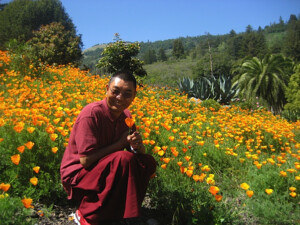 About the Venerable Khenpo Karten Rinpoche
About the Venerable Khenpo Karten Rinpoche
Khenpo Karten Rinpoche is an accomplished teacher and practitioner of the Karma Kagyu Lineage and is also trained in the Nyingma Lineage of Buddhism. He was born in the beautiful mountains of the Himalayas of Tibet. At the age of twelve, he was ordained at Ja-pa monastery, where he began his formal education of reading, writing and ritual practice. At the age of fifteen having completed the basic studies, he furthered his studies in the Sutra and Tantric texts under the accomplished master Khenchen Jigme Phuntsok Rinpoche and Pema Tsewang Rinpoche for eight years. Subsequently Khenpo Karten Rinpoche went to the hermitage of anther accomplished teacher, Sangye Tenzin Rinpoche and completed five years of retreat under the great master. In the retreat he completed the practices of the Naropa’s six yoga, Mahamudra and many others. In recognition of his achievements, Sangye Tenzin Ringpoche bestowed upon him the title, Khenpo Karma Lekshe Tharchin in 1994.
In 1996, he left Tibet and traveled to Dharamsala, India to meet His Holiness the Dalai Lama. Upon His Holiness’ advice, he spent another two years doing retreat. H.H Dalai Lama also recognizing his achievement, bestowed upon him the title Khenpo Rinpoche. After his retreat, Khenpo Karten Rinpoche was requested by H.E Tai Situ Rinpoche to go to the monastery of Venerable Tsoknyi Rinpoche, to teach the young monks there.
Khenpo Karten arrived in the United States in 2008, and taught in the Monterey Bay area for the first time in September of that year. After meeting a group of prospective students and seeing the hills of Big Sur which remind him of Tibet, he returned in 2009 to make the Monterey Bay his permanent home. Since then, Rinpoche has established the Manjushri Dharma Center (MDC) in Pacific Grove, California, which has become his main teaching location and his home residence. With unflinching faith in the precious Buddha Dharma, Khenpo Karten Rinpoche, now a U.S. citizen, bestows sacred teachings to thousands of people all over the world, with weekly teachings and events.
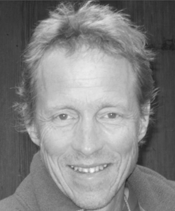 About David Molk aka Jampa Tharchin, esteemed Translator, Interpreter, and Author
About David Molk aka Jampa Tharchin, esteemed Translator, Interpreter, and Author
David Molk studied Tibetan language at Venerable Geshe Rabten’s Institute for Higher Tibetan Studies in Mont-Pèlerin, Switzerland. Since 1987 he has interpreted and translated for many Tibetan lamas. He lives in Big Sur, California.
Learn more about David’s translated books: David Molk (shambhala.com)
Photos Courtesy of Miles McBreen (Karma Palden)
The photos of Rinpoche used in this announcement are from Saturday, April 22, 2023, Earthday, taken in the Carmel Valley by Rinpoche’s kind student Karma Palden. (there is one exception, next to Khenpo-la’s biography, that photo is from Big Sur in 2015)

